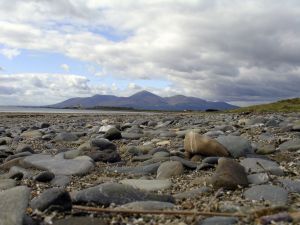National Parks of Northern Ireland
 |
Northern Ireland does not have national parks at the moment of writing, however, serious moves have been made to create a national park in the breathtaking Mourne Mountains which is supposed to cover the area stretching from Slieve Croob to Newcastle and Carlingford Lough. The proponents of the national park claim that it would increase tourism in the area and create new jobs but the plans for the national park also raised fears among the local community about its impact on their lives. |
The Mourne Mountains are a granite mountain rage in County Down in the province of Ulster. Although the mountain range is not (yet) designated as national park, it attracts hundreds thousands of visitors each year with its outstanding natural beauty as well as outdoor activities such as hillwalking, cycling, horse riding, fishing, golf and climbing. The Mourne Mountains also include the highest peak in Northern Ireland – Slieve Donard raising 849 metres above sea level.
The most famous man-made feature of Mourne Mountains is the so-called Mourne Wall that was built by the Belfast Water Commissioners between 1904 and 1922. The 1.5 meters tall and 35 kilometres long wall that was built from natural granite stone with the traditional dry stone walling technique was erected to enclose the land purchased by the Belfast Water Commissioners in the late 19th century and protect the water catchment area used to supply water to the city of Belfast. The area, however, is also home to a wealth of ancient monuments ranging from Neolithic artefacts to impressive medieval castle-like structures, while visitors interested in history are also impressed by the several hundreds of traditional buildings which include churches, courthouses, various public buildings and of course, private dwellings most of which date to the 19th century.
In 1993, the National Trust for Places of Historic Interest or Natural Beauty, commonly known simply as the National Trust purchased about 5.3 square kilometres of land in the Mourne Mountains including Slieve Donard and the adjacent Slieve Commedagh which is at 767 metres the second highest peak in the area. Most of the land in the Mourne Mountains, however, is privately owned but this is not the main problem concerning establishment of Mourne as a national park. The designation would without increase the number of visitors to the area and create new jobs (an estimated 2,000) but a part of the local community is concerned what impact an eventual designation of the Mourne Mountains as a national park would have on their lives. Many locals have expressed serious concern about the effect on farms, local industries such as granite production and real estate prices which could force the young people to set up a home outside the area.
It remains uncertain whether the Mourne Mountains will become a national park or not but one thing is certain – the area without a doubt meets all the criteria of a national park and offers an unforgettable experience.